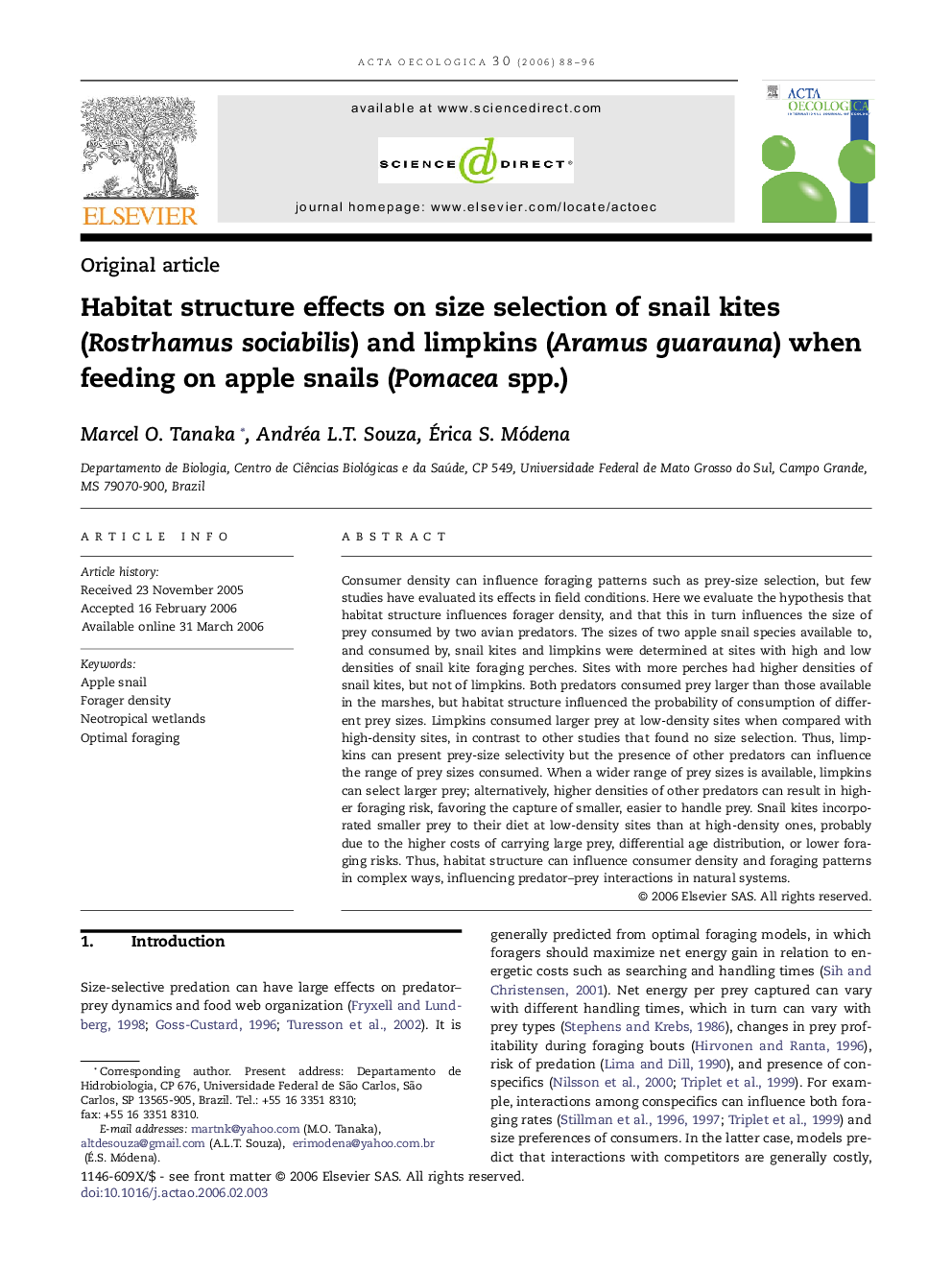| Article ID | Journal | Published Year | Pages | File Type |
|---|---|---|---|---|
| 4381233 | Acta Oecologica | 2006 | 9 Pages |
Consumer density can influence foraging patterns such as prey-size selection, but few studies have evaluated its effects in field conditions. Here we evaluate the hypothesis that habitat structure influences forager density, and that this in turn influences the size of prey consumed by two avian predators. The sizes of two apple snail species available to, and consumed by, snail kites and limpkins were determined at sites with high and low densities of snail kite foraging perches. Sites with more perches had higher densities of snail kites, but not of limpkins. Both predators consumed prey larger than those available in the marshes, but habitat structure influenced the probability of consumption of different prey sizes. Limpkins consumed larger prey at low-density sites when compared with high-density sites, in contrast to other studies that found no size selection. Thus, limpkins can present prey-size selectivity but the presence of other predators can influence the range of prey sizes consumed. When a wider range of prey sizes is available, limpkins can select larger prey; alternatively, higher densities of other predators can result in higher foraging risk, favoring the capture of smaller, easier to handle prey. Snail kites incorporated smaller prey to their diet at low-density sites than at high-density ones, probably due to the higher costs of carrying large prey, differential age distribution, or lower foraging risks. Thus, habitat structure can influence consumer density and foraging patterns in complex ways, influencing predator–prey interactions in natural systems.
